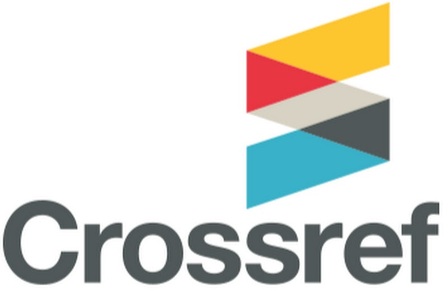FACTOR THAT INFLUENCING CAPITAL EXPENDITURE: PERSPECTIVE PECKING ORDER AND MANAGERIAL HYPOTHESES
(1)
(2) Universitas Surabaya
(3)
(*) Corresponding Author
Abstract
The objectives of this study are to observe the impact of internal cash flow, insider ownership, investment opportunity, investment opportunity and firm size on the capital expenditure in two different theories. Those theories are: (1) the pecking order hypotheses and (2) the managerial hypotheses, tested in Indonesian case. On the one hand, the pecking order hypotheses postulates that managers can choose the level of capital expenditure to maximize the wealth of current shareholders without considering insider ownership in the company. On the other hand, according to the managerial hypotheses, managers whose ownership proportions are small tend to use higher level of internal cash flows to finance the capital expenditure than that which would maximize the wealth of current shareholders. The data of this study is collected from 11 manufacture companies as listed in the Indonesian Stock Exchange. The result of this study shows that the internal cash flow, insider ownership, firm size and investment opportunity have positive impact on the capital expenditure. However, the impact of insider ownership and investment opportunity on the capital expenditure are not significant. Eventually, this study is disposed appropriate with the pecking order hypotheses.
Keywords
Full Text:
PDFReferences
Algifari.(2000), Analisis Regresi Teori,Kasus dan Solusi, 2th Editon,BPFE-Yogyakarta
Brigham, E. F., dan Gapenski, L. C.,1996, Fundamental of Financial Management, Fifth Edition, The Dryden Press.
Bromiley, P., 1986, Corporate Capital Investment: A Behavioral Approach, Cambridge University Press,London.
Cooper, D. R. & Emory, C. W., 1995, Bussiness Research Methods, Fifth Edition (Richard D.IRWIN,Inc)
Delcoure,V.Natalya,2006,Value Creation Of Cash Mergers.Empirical Investigation,investment Management and Financial Innovations, Vol.3,Issue 2
Dornbush, C. E., and Hansen, R.S.,1989, A Test of The Agency Theory of Managerial Ownership, Corporate Leverage and Corporate Dividend. Financial Management,Vol.18(Winter),pp.36-46
Gujarati, D.N., 1995, Basic Econometrics, 3th Edition, McGraw Hill International.
Gujarati, D.N., 2004, Basic Econometrics, 4th Edition, McGraw Hill International.
Gitman, L.J., 2006, Essentials of Managerial Finance, 4th Edition, Addison Wesley,Pearson Education,Inc.
Graham,B., Bromson,G., Ma, A., and Pak, S. L., 1992, The Capital Structure Puzzle. Securities Journal, June,pp.20-23.
Ghozali, Imam. 2000, Aplikasi Analisis Multivariate dengan Program SPSS. Badan Penerbit Universitas Diponegoro.
Higgins,Robbert C.,2001,Analysis for Financial Management,6th Edition, McGraw Hill International Edition, United States of America.
Husnan, Suad, dan Pudjiastuti, Enny, 1994. Dasar-Dasar Manajemen keuangan, Penerbit (UPP) AMP YKPN Yogyakarta.
Http://www.bps.go.id/releases/Gross_Domestic_Product/Bahasa_Indonesia/
Jurusan Manajemen FBE-UBAYA, 2009, Pedoman Penulisan Skripsi Jurusan Manajemen, Fakultas Bisnis dan Ekonomika, Universitas Surabaya.
Johson,Jr., Aaron C., Johson, Maruin B., and Buse, Rueben C.,1989, Economics: Basic and Applied,Macmillan Publishing Company.
Kuh, E., and Meyer, J. R., 1957, The Investment Decision, Harvard University Press, Cambridge.
Mansor, N. and Hamidi, M., 2008, Capital Expenditure Decisions of Malaysian Listed Companies. The Malaysian Finance Association Proceeding, 5th-6th June 2008, Kucing, Sarawak, Malaysia.
Manurung, Amran. dan Stephana,D.A.Ratnaningsih, Analisis Faktor-Faktor yang Berpengaruh Terhadap Tingkat Pembelanjaan Modal, Visi,Vol.13, Halaman 54-63,2005
Murhadi, Werner Ria, 2010, Study on Dividend Policy: Antecedent and its Impact on Share Price. Available at SSRN: https://ssrn.com/abstract=1686109 or http://dx.doi.org/10.2139/ssrn.1686109
Myers, 1984, The Capital Structure Puzzle, Journal of Finance, Vol.39 (July).pp.575-592
Nicholson, W. 1992, Microeconomics Theory: Basic Principles and Extensions,5th Edition. Dryden Press, Hinsdale,IL.
Rahardja,P dan Mandala Manurung.2004, Teori Ekonomi Makro Suatu Pengantar,Jakarta : Fakultas Ekonomi,UI.
Sartono, A., 2001, Pengaruh Aliran Kas Internal dan Kepemilikan Manajer Dalam Perusahaan Terhadap Pembelanjaan Modal: Managerial Hypotheses atau Pecking Order Hypotheses?, Jurnal Ekonomi dan Bisnis Indonesia, Vol. 16, No. 1 (Januari), pp.54-63
Sugiarto,Dergibson Siagian, Lasmono Tri Sumaryanto, dan Deny S.Ortamo,2001,Teknik Sampling,Jakarta:Gramedia.
SUTANTO, Budi; MURHADI, Werner R.; ERNAWATI, Endang. 2013. ANALISIS PENGARUH EKONOMI MAKRO, INDEKS DOW JONES, DAN INDEKS NIKKEI 225 TERHADAP INDEKS HARGA SAHAM GABUNGAN (IHSG) DI BEI PERIODE 2007-2011. Journal CALYPTRA, Vol. 2(1): p. 1 - 9, Available at:
Scott, W.R., 2003, Financial Accounting Theory, 3th Edition, Toronto: Prentice Hall.
Tandelilin, E.,2001, Analisis Investasi dan Manajemen Portfolio. Edisi Pertama, BPFE Yogyakarta.
Yeannie dan Handayani,R,2007, Analisis Pengaruh Kesempatan Investasi, Internal Cash Flow, Insider Ownership Terhadap Capital Expenditure: Perspective Pecking Order Theory, Jurnal Bisnis dan Akuntansi, Vol. 9,No.2,(Agustus),pp.153-164
DOI: https://doi.org/10.24123/jmb.v16i2.279
Article Metrics
Abstract view : 751 timesPDF - 89 times
Refbacks
- There are currently no refbacks.
Copyright (c) 2019 Journal of Management and Business
This work is licensed under a Creative Commons Attribution 4.0 International License. ISSN: 1412-3789. e-ISSN: 2477-1783.
 |  |  |  |
 |  |  |  |



